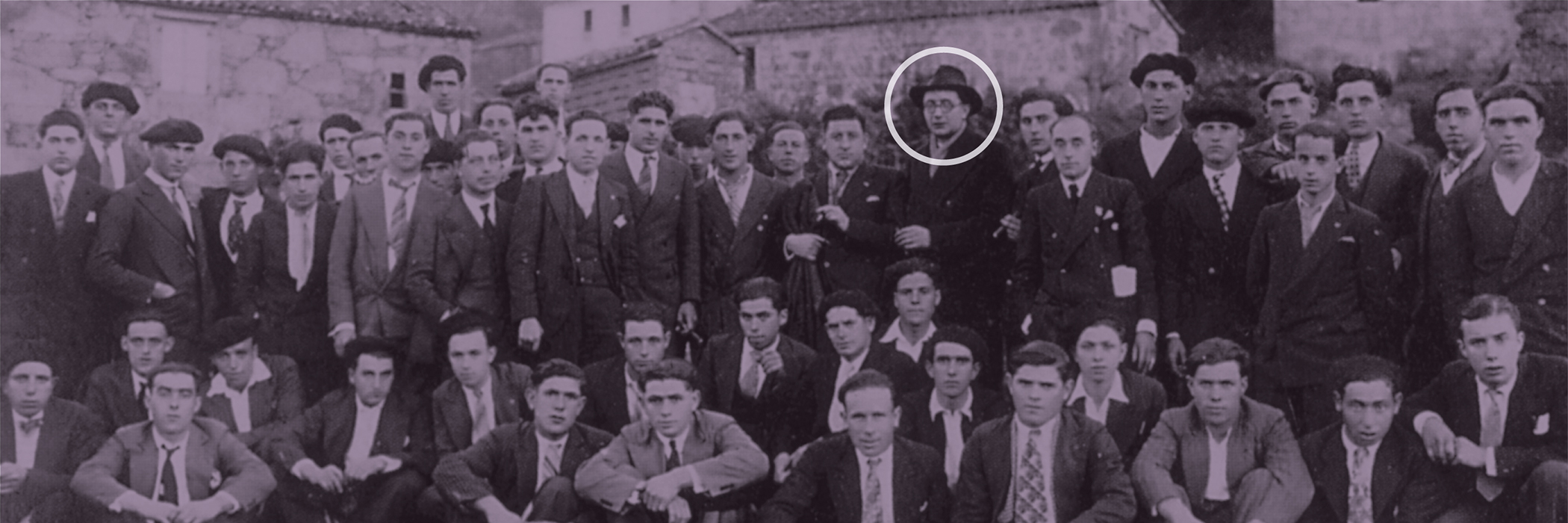Castelao as a Politician
The axes of his ideology are improving the living conditions of the people and achieving the highest degree of self-government for Galicia. Upon being elected as a deputy in 1931, Castelao entered active politics and surpassed the role of “our brilliant artist.” Since then, he co-piloted the Partido Galeguista (Galicianist Party) together with Alexandre Bóveda and, with Fronte Popular, they won the elections in 1936, obtaining the Statute of Autonomy.
The symbol of Irmandades da Fala (Brotherhood of the Language) and logo of the Partido Galeguista is the sickle and the white star, accompanied by the Galician flag. Detail of a drawing by Castelao: Galicians of America: Fulfil what your dead command!, 1938. New York Private Collection.

»» There are barely two hundred people and Castelao is among them: they are the Galician nationalists who created Irmandades da Fala in 1916 and launched a political project that changed the contemporary history of Galicia.
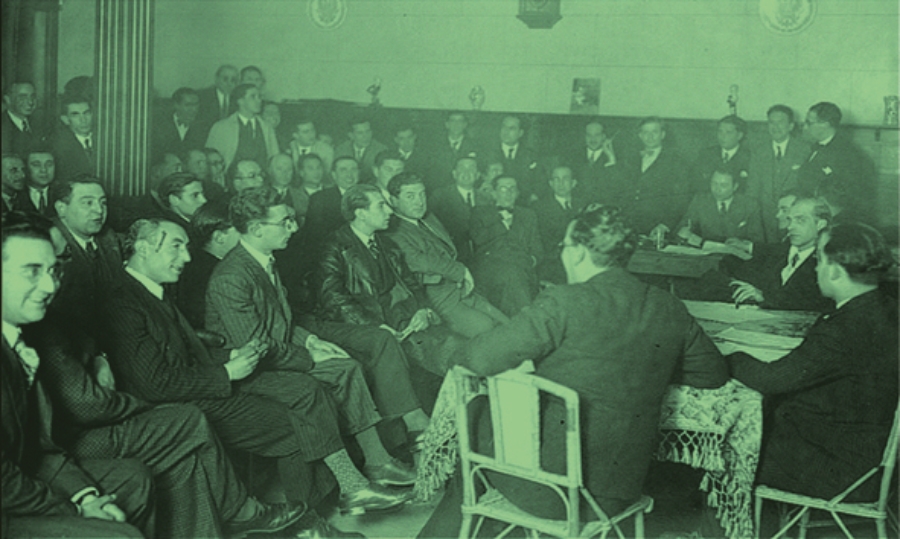
»» With the establishment of the Republic in the Spanish State, in 1931, the Galicianism supporters of the different trends created the Partido Galeguista, whose central axis is the achievement of the Statute of Autonomy of Galicia, which they achieved in 1936, after forming a part of the Popular Front, which wins the elections and calls a referendum on June 28, 1936. In the photograph, the founding of the Partido Galeguista, and Castelao is in the background, standing, the first from the right of the photo.
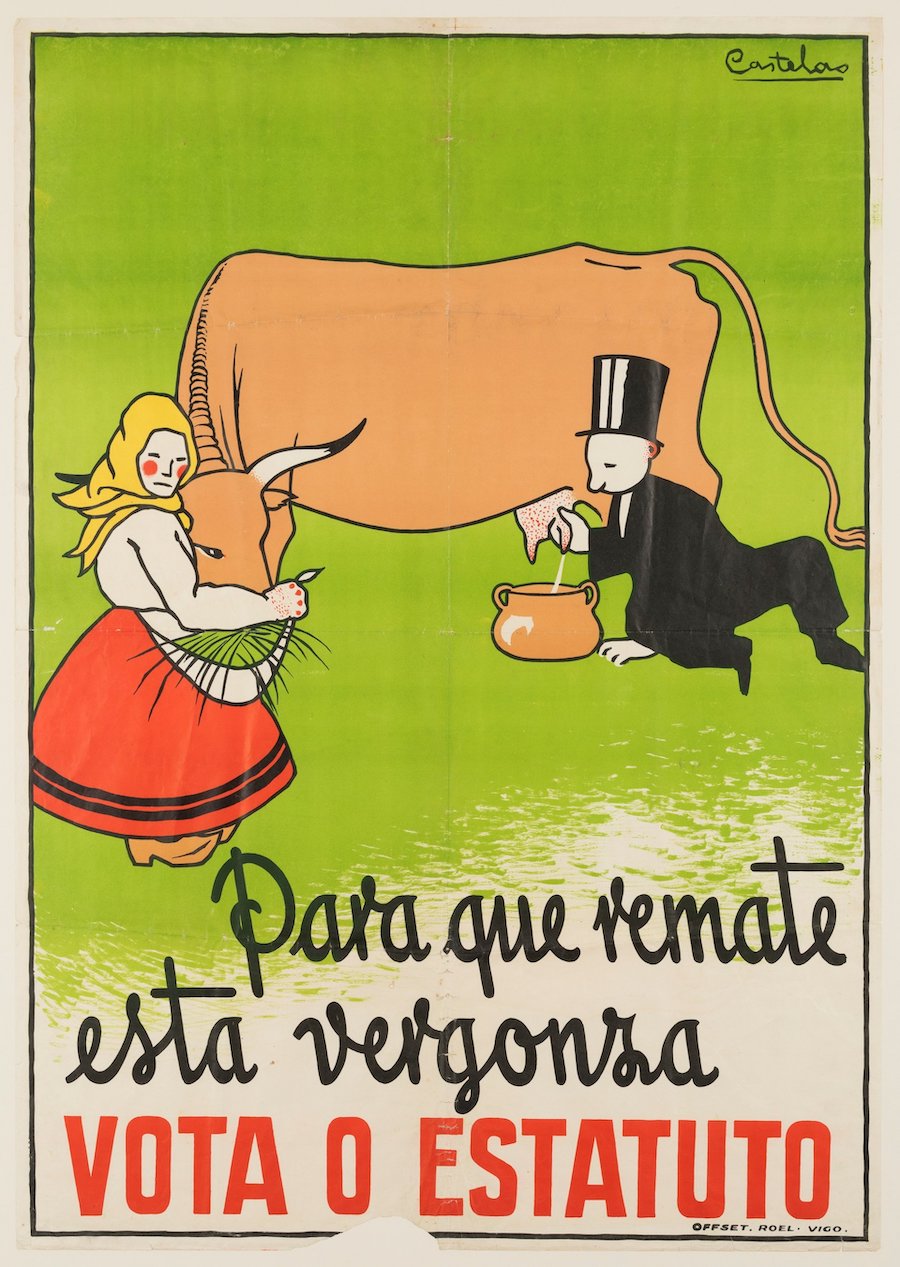
»» Castelao crossed out designs for the Statute of Autonomy of Galicia since 1932 and later drawings in the press. This is one of the themes repeated in the June 1936, campaign, executed by Isaac Díaz Pardo.
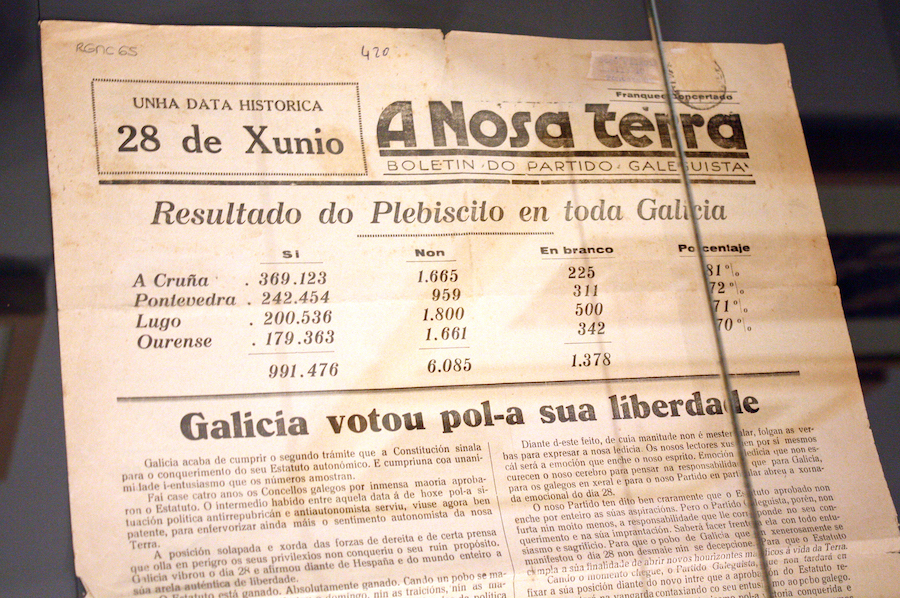
»» 99.24% of voters approve the Statute of Autonomy of Galicia. Results of the referendum voting, held on July 28, 1936, published in the newspaper A Nosa Terra, spokesperson of the Partido Galeguista.
Photograph of Lameiro in the Museum of Pontevedra.
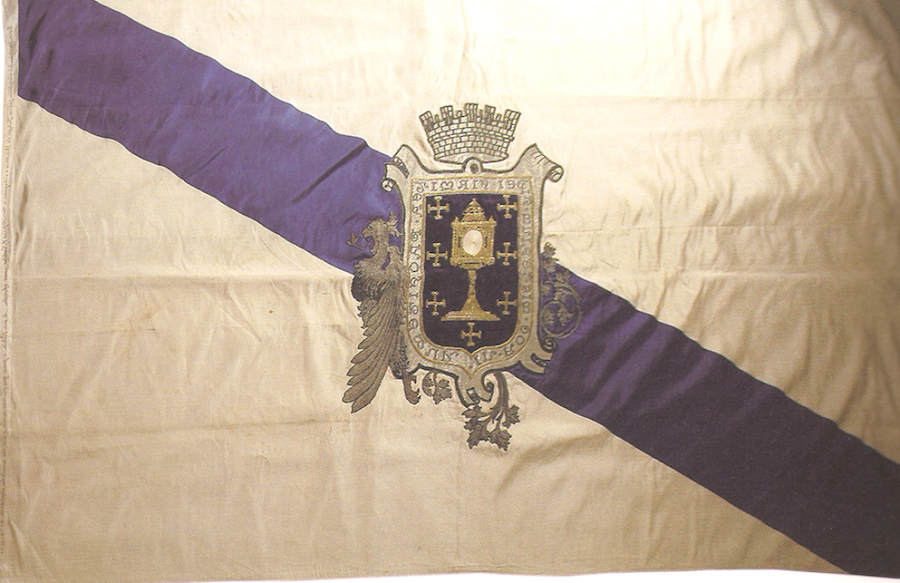
»» In 1944 the Consello Nacional de Galicia (National Galician Council) was established at the Ateneo of Montevideo, an entity that brought together Galician deputies with the aim of providing Galicia with a Government in exile. These were some of their members: Antón Alonso Ríos, Elpidio Villaverde and Castelao himself, who chaired it; later Alfredo Somoza would join. This council's flag was the one reproduced on these lines, with which a group of Galicians in Buenos Aires had honoured Castelao.
Duplicate courtesy of the Real Academia Galega.
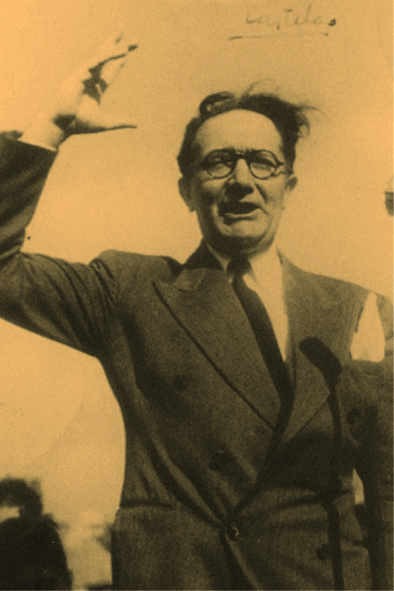
»» During the Civil War and later in exile, Castelao was incessantly active, trying to get the Republican Parliament, gathered in Montserrat in 1938, to approve the Galician Statute, which he achieved, after many delays, in the Parliament session held in Mexico in 1945.
In the photograph, meeting in Montevideo.
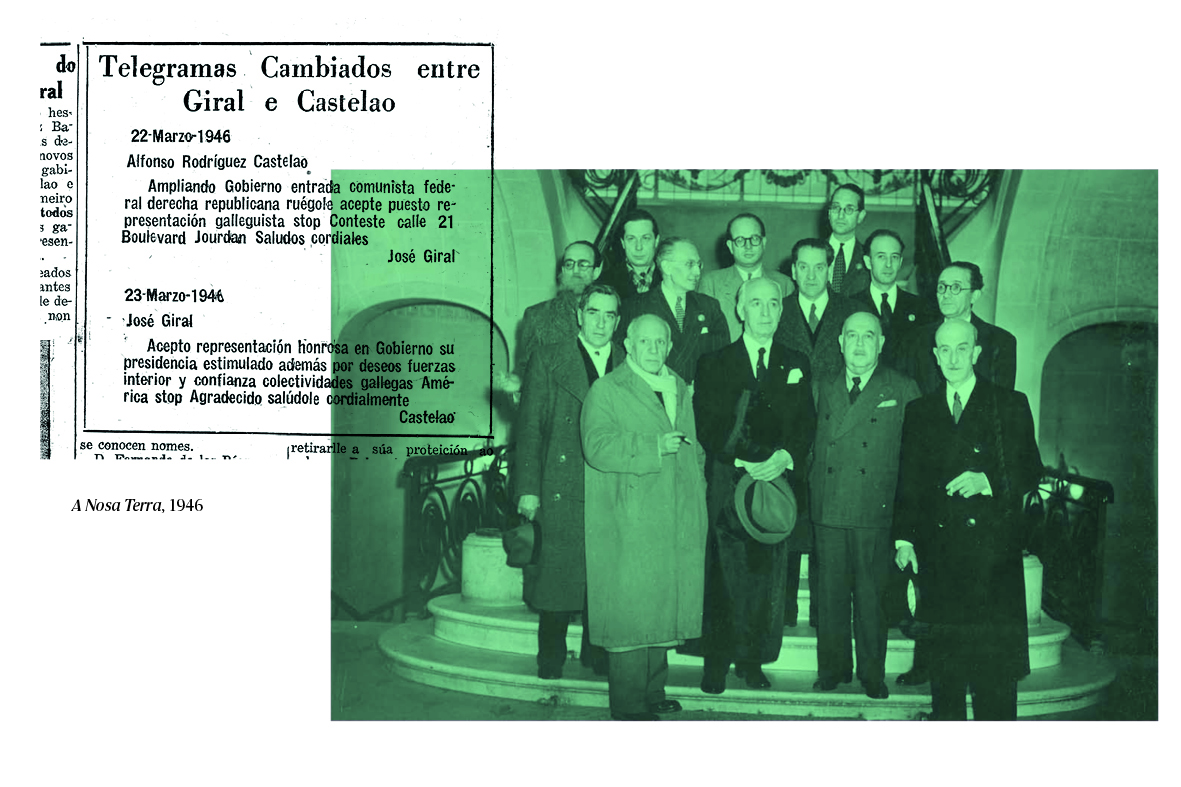
»» In 1946 Castelao was appointed minister of the Republican Government in exile, chaired by José Giral, presiding in Paris between 1946 and 1947. The Galicianist minister is in the second row, the first from the right, visiting the UNESCO with the government. In the first line, on the left, Pablo Picasso.

Sempre en Galiza (Always in Galicia)
1944
Political essay
This is the fundamental text of Galicianism, in which Castelao brings together various articles, speeches and harangues, which constitute his political ideology. The first editions were held in Buenos Aires, reaching Galicia clandestinely. The censorship of the dictatorship did not authorise its publication. It was published in Madrid in 1976, after the death of the dictator Franco. In Galicia it was not published until 1986.
“We, Galician nationalists, [...] defend, as a general principle, the sovereignty of all nationalities, and we demand for Galicia the guarantees of its free development and fertility.”
“These ideas can be specified in the following four principles:
a) Integral autonomy of Galicia to federate with the other towns of ‘Hespaña’ (note this instead of ‘España,’ or Spain).
b) Federal Republic of ‘Hespaña’ to confederate with Portugal.
c) Iberian Confederation to join the European Union.
d) United States of Europe, to build the World Union.”


